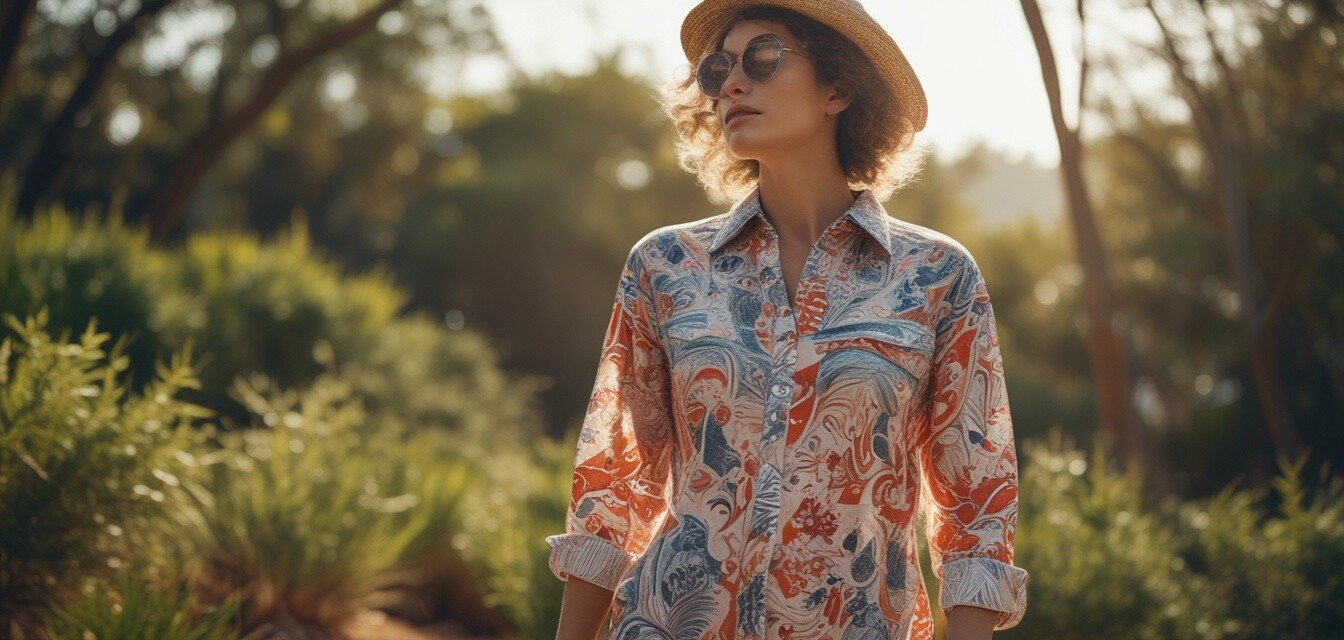
Spotlight on sustainable UV protective innovations
Key Takeaways
- Sustainable innovations in UV protective clothing are on the rise.
- Brands are using eco-friendly materials without compromising safety.
- Consumer awareness drives demand for sustainable options.
- Fashion meets functionality in UV protective clothing.
- Various eco-conscious brands are paving the way in this niche.
As we become more aware of the harmful effects of UV rays, the demand for UV protective clothing is increasing significantly. However, an exciting trend is emerging—sustainable innovations within this niche. Brands are stepping up to create environmentally friendly options that not only protect consumers from the sun but also contribute positively to our planet. In this article, we will delve into the sustainable practices being employed in the UV protective clothing industry and showcase some leading brands forging ahead in eco-friendliness.
The Importance of Sustainable Practices
With rising concerns about climate change and environmental sustainability, consumers are seeking products that align with their values. This has greatly impacted the UV protective clothing market. Eco-conscious consumers are demanding garments made with sustainable materials, eco-friendly production processes, and transparent supply chains.
Benefits of Sustainable UV Protective Clothing
| Benefit | Description |
|---|---|
| Environmentally Friendly Materials | Made from organic, recycled, or biodegradable fabrics that reduce waste and pollution. |
| Innovative Technologies | Utilizing advanced technologies to create functional clothing that protects against UV rays while being eco-conscious. |
| Consumer Awareness | Increased knowledge about UV protection is pushing consumers to seek sustainable options. |
| Fashion-Forward Designs | Combining aesthetics with functionality, proving that sustainable clothing can also be stylish. |
Leading Brands in Sustainable UV Protective Innovations
Several brands are at the forefront of integrating sustainable practices into their UV protective clothing. Here’s a look at a few notable names:
- Coolibar: Pioneering in UPF-rated clothing while adopting sustainable manufacturing practices.
- UV Skinz: Known for their use of sustainable materials and commitment to eco-friendly production.
- Patagonia: Integrates recycled materials and transparent sourcing in their UV protective activewear.
- Body Glove: Emphasizing the use of eco-friendly fabrics in their swimwear line.
- Nomadix: Converting post-consumer materials into stylish UV protective towels and apparel.
Innovative Materials Used in Sustainable Practices
| Material | Properties | Benefits |
|---|---|---|
| Recycled Polyester | Durable, lightweight, and quick-drying | Reduces plastic waste, environmentally friendly |
| Bamboo | Soft, breathable, and naturally UV-resistant | Biodegradable, sustainable growth |
| Organic Cotton | Soft, absorbent, and safe | Free from harmful chemicals, keeps soil healthy |
| Hemp | Rugged, durable, and UV-resistant | Minimal water usage, enriches soil |
Consumer Preferences and Emerging Trends
Market analysis reveals that as consumer awareness of UV protection and sustainable products rises, there is a growing desire for multifunctional outdoor clothing. Shoppers are looking for outfits that not only provide sun protection but are also made ethically. This demand prompts brands to innovate and adapt their offerings accordingly.
Current Trends in Sustainable UV Protective Clothing
- Minimalism: Simplified designs that focus on function.
- Sustainably sourced materials: Brands are using organic cotton, recycled plastics, and other eco-friendly alternatives.
- Transparency: Companies providing clear information about supply chains and production processes.
- Community engagement: Involvement in environmental causes and educating consumers about UV safety.
The Future of Sustainable UV Protective Clothing
The future of UV protective clothing is promising, particularly as sustainability continues to be a central theme. As technology advances, there will be more innovations in fabrics and manufacturing techniques. This ongoing evolution will also likely bring about higher-quality products that can combine style, safety, and ecological responsibility.
Pros
- Environmentally friendly choices available.
- Innovative solutions in sun protection.
- Style without compromising efficacy.
- Strengthened brand loyalty from eco-conscious consumers.
Cons
- Potentially higher price points.
- Limited availability compared to conventional options.
- Education required for consumers to understand benefits.
Conclusion
Sustainable innovations in UV protective clothing represent a significant stride toward combining safety with environmental consciousness. As consumers continue to drive the demand for eco-friendly choices, brands must adapt to remain competitive. By choosing sustainable UV protective garments, consumers contribute to a healthier planet while ensuring their skin is well protected.
To learn more about sustainable products, check our News and Trends section, or stay informed about health and safety tips to safeguard your skin.